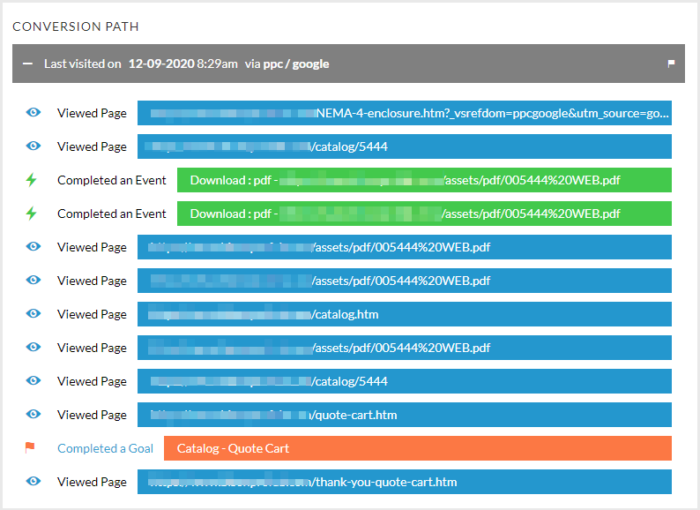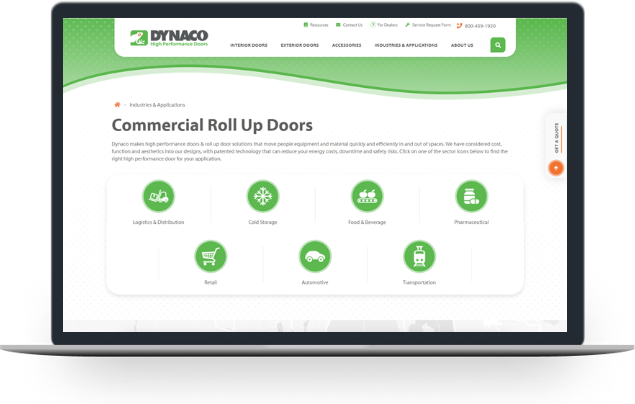December 10 2020
What to Consider Before Removing Content
Whether you are launching a new website and wanting to get rid of less important pages, merging multiple websites, entering a new market, or wanting to get rid of old products or services listed that are no longer offered by your business, you may have considered removing content or pages in the process.
You might know that old and outdated content can hurt you, but there are ways to revisit that content to make it still work for you. Instead of removing whole pages, consider some other options.

If you see this type of error when searching for a page, how likely are you to return to that website?
First, Know Your Content
If you are considering getting rid of entire pages of content, you should first understand what that content is doing for you. Take a quick audit of your site and really look at the pages in question. Look for content that you consider to be repetitive or unneeded. Does that content get traffic, either through organic or paid sources? Is it ranking in the search engines? Will it be missed? Is it relevant in any way to what your users might be searching for (both online and through your internal site search)? Chances are, the answer to these questions is yes and if so, you should consider other options.
Reasons Why People Consider Removing Content (and What We Recommend Doing Instead)
A product or service is no longer offered. Users look for older products and services all the time, by removing them from your website, you are missing out on some opportunities to educate and reach those users. For instance, what if you no longer offer a part, but are selling an upgraded version? Your site visitor might not know there’s another alternative out there unless you change your content on the page to mention the new product.
The landing page shown above is a great example of an alternative solution. Even though the product now has an updated version, the landing page is still available with downloadable resources, SKUs and a link to its replacement. This ensures the company doesn’t miss an opportunity should someone be looking for the specific SKU attached to the older version.
They are building a new website and want to remove underperforming landing pages. This is a great opportunity to take the pages you have and refresh the content! You should utilize your analytics data to confirm that users are viewing the pages you’re considering removing. Even if it isn’t showing up as a high converting page on your website, it may still be assisting users with helpful information during their decision-making process. There are also organic and paid search benefits to keeping the pages you have and updating the content by adding headings to make the content more digestible for readers and search engines.
Assistive content is just as valuable as high converting landing pages as it often provides the information a user was needing to understand after landing on a website and before requesting a quote. In the example above, the user viewed multiple PDFs and other detail pages before adding a product to their quote cart and requesting a quote.
To direct focus on a new market or area of opportunity. That’s great! We often help clients with content strategies geared towards attracting new markets and driving new opportunities online. There are ways to focus on multiple industries, locations, etc. by adding new content while still keeping the information on your site for the other areas your business already serves.
Industries or Areas Served sections are great ways of providing content that attracts a variety of markets your business is interested in working with.
Other Alternatives to Removing Content
Refresh or Update Your Content. Once you have identified some old content that is not serving you as well as you might like, consider updating the content to be more relevant to your needs. You don’t have to get rid of an entire page simply because some of it is no longer applicable. Update and refresh the content so that it better answers user questions and you are more likely to keep the traffic already coming in, as well as attract new users.
Find Another Place for That Content. Maybe there’s a piece of content on one of your pages that would be better served elsewhere. Great! That content is still useful and can be consolidated with other pages that are also producing results. But you still don’t want to delete the old page. Instead, set up a redirect to the page you moved the relevant content to so your users can find it easily.
Remove Only Exact Page Duplicates. The more closely your content resembles other content on the web, or on your own site, the more likely you are to get penalized by the search engines for having duplicate content. If you cannot refresh or adjust duplicate content, you can utilize a 301 redirect to the page that gets the most relevant traffic. This helps to preserve most of the page authority and any backlinks it may have while passing some value on to the new page.
If Removing Content is Still the Best Way to Go
If you’ve gone through our list, considered additional alternatives, and still feel that the best strategy for your website is getting rid of pages or content you’ll want to make sure you do so in an SEO-friendly manner. When you remove content improperly, it can negatively impact your website. It can result in loss of traffic and visibility within the organic landscape. A redirect can help mitigate this loss and is recommended.
What This Means for You
Though old and outdated information could confuse your website visitors, removing pages can cause similar problems. Taking the time to reuse or refresh that content will benefit both you and your customers.




